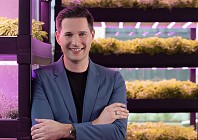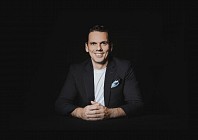You may not have heard the name Jean-Michel Gathy, but if you’ve a taste for luxury travel then you’ve no doubt become acquainted with one of his designs. The man is a celebrity in the world of high-end resorts, for the simple reason that he has designed many of them.
From untouched islands in the Maldives, to hidden sanctuaries in Southeast Asia and urban escapes in Europe, Gathy and his company, Dennison Architects, dominate the luxury resort market, with a client list that includes top brands including Amanresorts, GHM, Cheval Blanc and One&Only.
Despite a perpetually hectic schedule, Gathy remains as passionate about his work today as he was during his formative years as a young man fascinated by engineering and exotic places. Gathy is a man constantly on the go – and he wouldn’t have it any other way.
What first sparked your interest in architecture?
When I was a young boy I was fascinated by travel and world maps. In 1963, when I was eight years old, my father asked me to organise a two-day family trip to Italy. I collected the various guides showing all the important monuments, museums and notable sites to visit, and I studied them all so I could talk about them on the way down to Italy. I became fascinated by what I was reading: the artists involved, the reason why these monuments were built and how they were executed. That’s what triggered my interest in architecture. The travelling side is what triggered my interest in hotels. The best way to put them together is by designing hotels.

Were you always working on hotel projects?
No, when I started I lived for three years in Belgium, working on a project for a university. Then I went to Hong Kong, where I worked on bank buildings. The first time I had the chance to design the renovation of a hotel was in 1989 and my first full hotel design was in 1990.
Talk us through that first project.
Amanwana in Indonesia was a very difficult property. As it was my first full hotel project, I did all my learning on that one. Lady Diana went there in 1992 with some friends, where she was spotted with an “unknown mystery man”, which was actually me [laughs]. Because I was the architect on that project, I was asked to go there while Diana was visiting, to offer any assistance. I flew back to Bali with them and, of course, when we arrived in Bali on a private plane, I happened to be the “unknown man” seen with them.
How did your career evolve from there?
That resort was a very important step in my career. Because Adrian Zecha, the founder of Amanresorts, gave me the chance to do this project, he gave me not only a stronger taste for resorts, but also a taste for luxury. I believe I did well on that property, and after that he gave me many other chances, and that lead to me meeting the right people and doing more and more projects. I was lucky to have been offered these possibilities and I worked like a madman for 25 years to make sure I didn’t fail. The more you design top-class properties, the more people ask you to design top-class properties.
How do you go about creating design concepts to ensure each brand and resort stands apart?
In every company, there are characteristics. You could compare hotels to cars. A Jaguar, for instance, is a great car. The Mercedes is a great car. The Porsche is a great car. BMW and Audi are great cars. All of these are great cars, but they all have totally different personalities. The Jaguar will be refined and sleek with superb leather, the Ferrari will be ostentatious and the Porsche will be loud but reliable.
Hotel companies are the same. For example, One&Only is a little more playful and they want properties to be a little bit bigger, whereas Aman places a heavy focus on aesthetics more than facilities, tuning into a zen, psychological aspect. Cheval Blanc is all about elegance. You have to be elegant, smooth, silky, refined and [the best] of everything. I take a characteristic and translate it into a site. Budgets, logistics, condition of construction and timing are also factors that affect design.
How would you define luxury?
Time, space and privacy are all the most important factors of luxury. When Prince William and Kate Middleton went to [Cheval Blanc] Randheli earlier this year, they didn’t leave their villa, which was private and spacious. The idea that you don’t need to go anywhere for anything isn’t an unusual concept, but creating the space to do that is. You can’t consider a top hotel with 200 rooms a luxury property. It might be a top hotel, but you can’t have the same identity and privacy when there are 200 rooms.
Where do you like to go to get away from it all?
I love safari. I have been to every safari place you can imagine; India, South Africa, Botswana, Malawi and Kenya... We’ve been to 50 different camps. I could sit in my jeep looking at a leopard for five hours without talking.
Where’s your top safari location?
Irrefutably, Botswana. It is the best place in the world. The game is fantastic and the scenery is gorgeous with the interaction between wetlands and dry savannah. It is just magnificent and diverse, with a rich environment and wildlife.
Would you say you’re partial to adventure travel?
I love safaris and I love mountains. If I had to choose where to go on holiday, I’d prefer to ski rather than go to the beach. Actually, after two weeks on the mountains, a few days on the beach is very good. I also like urban holidays. I like to go cities like New York and London for the restaurants, the hip places to go, the shopping and museums. My wife and I also like the urban vibes of Rome and Sydney. But I also like New Zealand’s South Island; the desert scenery of Morocco; Oman is sensational; Peru is fabulous and Ecuador is magnificent.
What destinations are left on your travel bucket list?
Iceland. So far I’ve just seen pictures in books; the rugged landscapes, glaciers, rough seas, hot springs and volcanoes. I like that. I would also like to visit the south of Chile and the peninsula of Kamchatka in Russia, which has extraordinary wildlife and endless forests.
Are there cities that still inspire you from a design perspective?
I like the setting of San Francisco and Sydney. Rio de Janeiro as well. In every city you have beautiful buildings. If I had to choose two cities they would be London and Paris. They have kept that historic value and urban textures of the past, even though they’ve added a few modern buildings to it. I like that mixture.
Why did you choose to base yourself in Kuala Lumpur?
I’ve been in Asia for 33 years and the last 20 in Malaysia because I like it and I believe there is plenty of opportunity here. I believe it is certainly the most hospitable country, with an extraordinary mix of races, so you don’t feel like a foreigner. For example, my wife is Malaysian with Chinese-Portuguese heritage and I am Caucasian.
With all the travelling you do, what are your travel essentials?
I always travel with a cashmere scarf for the plane and a sweater (I am a big cashmere fan). I also travel with my camera, a Canon EOS 5D Mark III and I travel light. I try not to carry too much because I try to avoid checked baggage at the airport. I also travel with my roll of tracing paper and the latest sketches I have to prepare for the next project, and I design on the plane.
So, where are you off to next?
Gabon — I am working on three new Aman resorts there.
Any time for a safari while you’re in that part of the world?
I wish! Instead of watching leopards I have to watch guys pouring concrete.












